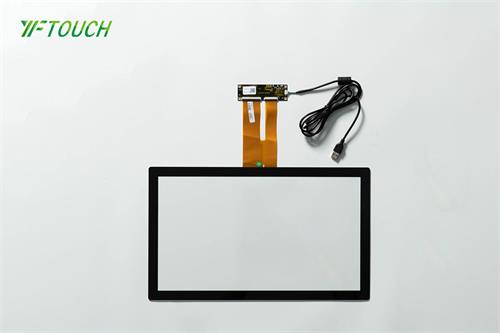Capacitive Touch Screens are widely used in smartphones, tablets, laptops, and interactive kiosks, enabling intuitive and precise user interactions.Capacitive Touch Screens offer several advantages over traditional resistive touchscreens, making them a popular choice for modern devices and applications. Here are key reasons why capacitive Touch Screens excel:
Greater Sensitivity and Precision: Capacitive Touch Screens respond to the electrical properties of the human touch, providing higher sensitivity and accuracy. This translates to smoother and more accurate touch interactions, reducing the need for excessive pressure.
Multi-Touch Support: Capacitive touch screens support multi-touch gestures, allowing users to perform actions like pinch-to-zoom and two-finger scrolling. This enhanced functionality contributes to a more intuitive and versatile user experience.
Durability and Longevity: Capacitive touch screens are more durable due to their solid glass surface and absence of moving parts. This durability helps resist wear and tear from repeated use and provides a longer lifespan compared to resistive screens.
Enhanced Clarity: Capacitive touch screens are often made from high-quality glass, resulting in better visual clarity and reduced glare. The absence of multiple layers (like in resistive screens) contributes to improved display quality.
Higher Resolution Support: Capacitive touch screens can accommodate higher resolutions, allowing for sharper visuals and more precise touch tracking. This is particularly beneficial in applications where accuracy is crucial.
Better Light Transmission: Capacitive touch screens allow for higher light transmission through the screen due to the absence of multiple layers. This contributes to improved display visibility, even in bright environments.
Ease of Cleaning: The smooth glass surface of capacitive touch screens is easy to clean, making them more resistant to smudges and fingerprints. This is essential for maintaining display clarity and hygiene.
Reduced Calibration Issues: Capacitive touch screens require minimal calibration compared to resistive screens, resulting in fewer alignment or drift problems.

In summary, capacitive touch screens offer superior sensitivity, responsiveness, and longevity compared to regular touchscreens. Their multi-touch support, durability, and modern design make them well-suited for a wide range of applications, from smartphones and tablets to interactive displays and kiosks.
Copyright © 2025 Dongguan Yuefeng Optoelectronics Co., Ltd All rights reserved.